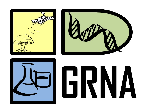Banca de DEFESA: GERALDO WALTER DE ALMEIDA NETO
Uma banca de DEFESA de MESTRADO foi cadastrada pelo programa.DISCENTE : GERALDO WALTER DE ALMEIDA NETO
DATA : 23/03/2020
HORA: 09:00
LOCAL: Via Zoom
TÍTULO:
EPIDEMIOLOGICAL ANALYSIS OF THE TEMPORAL EVOLUTION OF SCORPIONISM IN BRAZIL WITH EMPHASIS ON THE BRAZILIAN LEGAL AMAZON, 2000 TO 2018
PALAVRAS-CHAVES:
Scorpion. Envenomation. Information systems. Brazil.
PÁGINAS: 30
GRANDE ÁREA: Outra
ÁREA: Ciências Ambientais
RESUMO:
Accidents by venomous animals, although old, still represent a major public health problem in Brazil and worldwide. Among these, scorpionism, which is caused by scorpion stings, can lead to human envenomation whose severity and evolution vary from mild to moderate and even severe cases, which can cause sequelae or deaths. This work analyzed the clinical and epidemiological profile of scorpionism in Brazil with an emphasis on the Brazilian Legal Amazon, from 2000 to 2018. The methodology consisted of a descriptive and analytical clinical-epidemiological survey of scorpion envenomations notified in the Notifiable Diseases Information System - SINAN, in the period from 2000 to 2018. The variables were analyzed by calculating the rates of incidence, lethality, mortality and Odds Ratio, using a 95% confidence interval. The tabulation, analysis and plotting of the data was performed using Microsoft Excel 2013 software. The EpiInfo 7.2 software was used, particularly, for case-control analysis. The incidence maps were produced with QGIS® version 3.10 and the spatial correlation maps with the GeoDa 1.12 software. In the studied period, there was an increase in the number of reported cases in Brazil from 12,552 cases in 2000, to 156,833 in 2018, which represented an increase of 1249%, with a total of 1,109,443 cases and an annual average of 58,392 cases. In the Brazilian Legal Amazon, 64,986 cases were reported in the period from 2000 to 2018, which represents 5.85% of national notifications and of which 136 died. Male individuals aged from 20 to 59 years were the most affected and the most frequent cases of death occurred in the group of up to 9 years old. The factors associated with the death from case-control analysis indicated individuals aged 14 years or less and the cases classified as severe. Regarding the spatial distribution of accidents, vector clusters of incidence were observed in the health region of Baixo Amazonas, Xingu and Tapajós in the state of Pará, in the health region of Rio Madeira in Amazonas, as well as some regions of Mato Grosso (health regions of Alto Tapajós and Northwest Mato-grossense), Tocantins (Ilha do Bananal and Amor Perfeito health regions) and Maranhão (Balsas health region). In the Brazilian Legal Amazon, rural areas are among the most susceptible to scorpion envenomation, with the population in the economically active age group being the most affected, although cases of death were more frequent in children. The increased incidence of scorpionism in Brazil described in this work highlights the necessity to intensify epidemiological surveillance actions, particularly in the southeast and northeast regions of the country, where cases of death were more frequent. It is worth mentioning the need for better investment of resources, within the public policies aimed at preventing accidents with venomous animals and patient care, as well as for the quality and updating of the notification systems, since these allow the identification of the affected regions and also to perform the necessary actions.
MEMBROS DA BANCA:
Presidente - 1684515 - JOACIR STOLARZ DE OLIVEIRA
Externo à Instituição - JUAREZ DE SOUZA - UEPA
Interno - 1796322 - RICARDO SCOLES CANO
Externo ao Programa - 1243405 - THALIS FERREIRA DOS SANTOS




